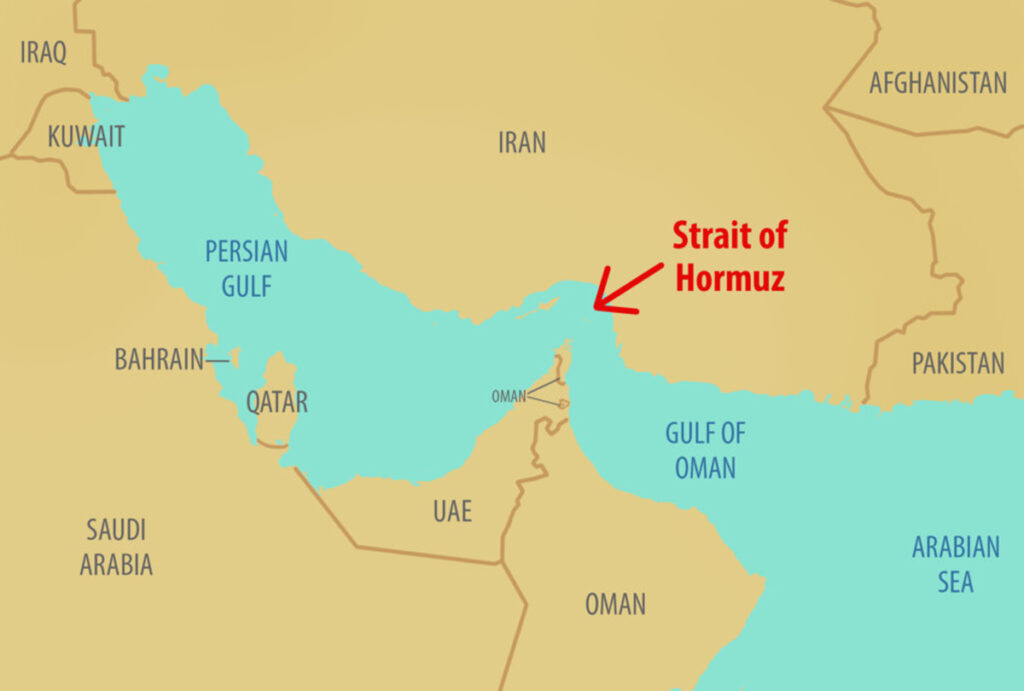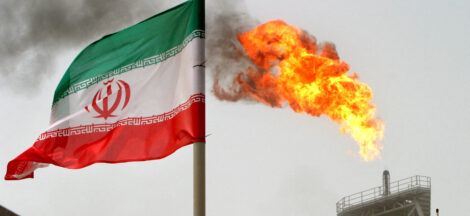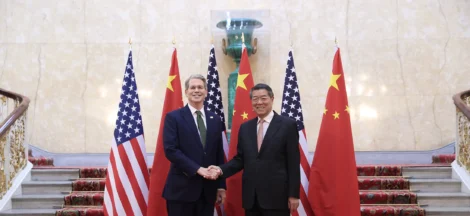By K Raveendran
Israel’s strike against Iran has reignited a familiar tension in global energy markets, sending oil prices climbing into the mid-$70 per barrel range. The impact is not just visible in the numbers, but in the broader nervousness sweeping across energy trading floors and geopolitical circles alike. At the heart of this movement lies the so-called “geopolitical risk premium”—the extra cost per barrel that markets price in when a key oil-producing region teeters on the brink of conflict. That premium has now risen to about $8 a barrel, a level surpassing even the acute flashpoints of April and October 2024, when Israel and Iran directly exchanged strikes for the first time in decades.
This escalation has naturally drawn intense scrutiny, not only for the possibility of a broader military conflict but also for its potential to derail the delicate logistics of global oil supply. Among the many scenarios being modelled by analysts and strategists, one stands out as the most consequential: whether Iran will target the Strait of Hormuz. This narrow waterway, separating the Persian Gulf from the Gulf of Oman, has long been considered the most critical chokepoint in the global oil trade. Some 12 million barrels of crude pass through it daily—more than 20 percent of global consumption—with refined products pushing that number closer to 20 million barrels per day. Over 80 percent of this volume is Asia-bound, underscoring the strait’s indispensable role in maintaining the energy lifelines of the region’s largest economies, from India and China to Japan and South Korea.
As of now, market sentiment appears to be in a state of watchful hesitation. The price jump has been meaningful but not chaotic, largely because Iran’s response remains undefined. If history is any guide, Iran may opt for a calibrated retaliation targeting Israeli military sites or regional proxies, thereby avoiding a broader confrontation. Such moves, while headline-grabbing, typically result in only short-lived spikes in oil prices. The key here is the market’s growing familiarity with these kinds of actions—they generate noise and some volatility, but unless they escalate further or disrupt infrastructure, their economic impact tends to be fleeting.
But this time, the calculus feels different. The rhetoric on both sides has been sharper, and the regional alignments more complex. Should Iran choose to escalate further—by, for instance, targeting oil infrastructure in Saudi Arabia or the UAE, harassing tankers, or more provocatively, attempting to close or disrupt the Strait of Hormuz—then oil prices could enter a much more volatile phase. These are not theoretical risks. Iran has a long record of threatening to shut the Strait, and although it has never fully succeeded, its past actions—from missile launches to the seizure of oil tankers—have proven that it has the capacity to cause significant disruption and uncertainty.
What makes the current scenario more precarious is that the available alternatives to the Strait are limited and insufficient for maintaining full flow continuity. Saudi Arabia operates the East-West pipeline, which moves oil from the Eastern Province to the Red Sea, bypassing the Strait altogether. The UAE, similarly, utilizes the Habshan-Fujairah pipeline, allowing some oil to reach global markets without passing through Hormuz. However, these routes together only handle around 6 million barrels per day—barely half of the volume typically moving through the strait. Any prolonged disruption would thus create a substantial bottleneck, forcing refiners, traders, and governments to draw down on strategic reserves or scramble for alternative sources, both of which would drive prices sharply higher.
Moreover, the strategic geography of the Strait of Hormuz compounds the challenge. The narrowest point of the strait is only 21 miles wide, with shipping lanes just two miles wide in either direction. It is shared with Oman, but Iran’s proximity and control over its northern shores allow it to exert considerable influence over the waters. Iran has previously used tactics like jamming GPS signals to misdirect tankers into its waters, as well as deploying fast boats to harass or seize vessels—moves that don’t necessarily stop the flow of oil but make the journey riskier and more expensive. Insurance premiums on shipments rise, and so do charter rates and freight costs, all of which contribute to a rising cost base for global oil.
Adding another layer of complexity is the presence of US naval forces in the region, tasked with securing free passage through the Strait. If Iran targets US military assets—either in the Persian Gulf or at bases across the Middle East—the conflict risks broadening dramatically. Such a scenario would likely see not just a spike but a sustained surge in oil prices, possibly well beyond the $100 mark, as the market prices in a protracted disruption rather than a one-off skirmish.
In this sense, Iran’s next move is not just a matter of military strategy—it’s an economic pivot point. A restrained response could cap oil prices in the $75–$80 range, assuming no further escalation and a swift return to status quo. But any move to unsettle the energy infrastructure or shipping lanes in and around the Strait of Hormuz could catapult oil into the $90s or beyond, with reverberations across inflation, interest rates, and global growth.
It’s also important to consider the broader strategic environment in which this is unfolding. The global oil market has been gradually recovering from the shocks of the COVID era, with supply-demand balances tightening but still fragile. OPEC+ has been cautious with its output strategy, attempting to maintain price stability while managing spare capacity. Any geopolitical jolt that tightens supplies further could disrupt this balance, especially if it coincides with seasonal demand upticks in the northern hemisphere.
China and India, the two largest consumers of Middle Eastern oil, are also watching the situation with growing unease. Both have been diversifying their oil imports and building up strategic reserves, but neither can easily replace the volumes that flow through Hormuz. The threat of prolonged disruption may prompt them to engage diplomatically behind the scenes, possibly leaning on Gulf allies or utilizing leverage with Tehran to de-escalate tensions. Meanwhile, the United States, although less dependent on Middle Eastern oil than in previous decades, remains a key player due to its security commitments and broader geopolitical interests in the region. (IPA Service)




 Tehran and Tel Aviv Trade Blows in Full‑Scale Strike and Counterstrike
Tehran and Tel Aviv Trade Blows in Full‑Scale Strike and Counterstrike 